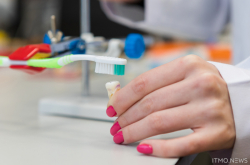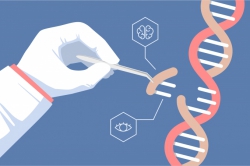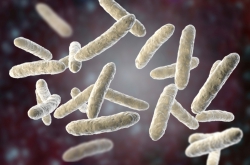Metagenomic analysis has become a very popular research method in such fields as biology, medicine, and food biotechnology. A metagenome is a collection of genetic material of all bacteria living in a given body site. By looking at one’s metagenome, scientists and doctors can characterize the composition and balance of intestinal microflora and draw conclusions about its contribution to health of cohorts. Moreover, this method can be used to find out what effect a particular drug or type of food has on microbiota. Hundreds and thousands of metagenomes contain large amounts of useful information, which cannot be analyzed manually. Therefore, special tools are needed to interpret metagenomic data.
To solve this problem, a team of Russian developers from Skolkovo, ITMO University and MIPT have created an analytical platform, which is designed to statistically investigate data and present it as interactive plots. It can be used to assess if microbiota of a group of subjects can produce enough vitamins and other substances important for one’s health. Moreover, the platform users can compare their data with thousands of other samples collected from healthy population and patients with diseases. In this case, the analysis can include not only metagenomic data itself but also some related indicators such as gender, age, the severity of the disease or clinical analyses results.

The analysis starts automatically after the data is uploaded to the cloud. Then the user receives an online report with the results for each analysis stage: from data quality control to statistical hypotheses testing. This report can be then shared with colleagues, used for scientific publications or posted online.
“Our development is aimed at helping academic researchers and experts from food, pharmaceutical and other industries to correctly process and interpret metagenomic data. Using the accumulated database, researchers can compare their data with previously published information. For example, if you’ve got some new data on the microbiota in inflammatory bowel diseases, then in Knomics-Biota, you can put this data on the map of patients with the same diseases from around the world", comments Alexander Tyakht, a researcher at ITMO University and Chief Technology Officer at Knomics, a microbiome research and development company.
Compared to other metagenomic data analysis systems, Knomics-Biota has several advantages. For instance, using this service, one can conduct a comparative analysis with arrays of publicly available data aggregated according to thematic contexts (diet, diseases, populations, etc.). It is also possible to process input data in various formats. And last but not least, the information about data analysis methods is always included in the final reports, so the workflow can be easily described in scientific papers, as well as reproduced in further studies.

“Thanks to the system’s flexibility, Knomics-Biota can be applied to the analysis of any microbiota type, not only the intestinal one. The information about its composition helps, for example, to prevent microbial corrosion of equipment in the oil industry. Another important field is the metagenomic analysis of food products, including probiotic ones. Such studies provide an innovative approach to quality control of food and drug production and, in the long run, can help to optimize product formulations basing on metagenomics,” notes Daria Efimova, the first author of the article, a developer from Knomics company.
The system is available to doctors, analysts, and biologists without advanced skills in bioinformatics and programming. It is aimed at facilitating the conversion of the metagenomic research results into biomedically important knowledge and helping to develop international collaborations in the field of microbiome analysis.
Reference: Knomics-Biota - a system for exploratory analysis of human gut microbiota data. Daria Efimova, Alexander Tyakht et al. BioData Mining, 6 November 2018




